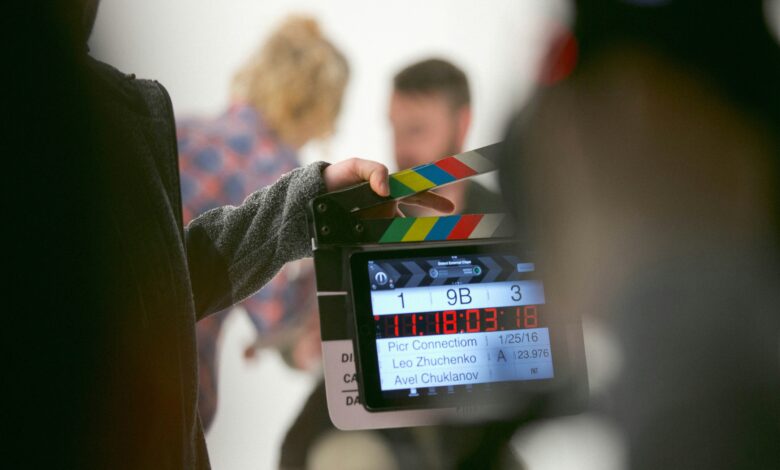1982 Movie “Poltergeist” Used the Real Skeletons As – Tymoff

In the annals of Hollywood history, few movies have generated as much intrigue, speculation, and outright fear as the 1982 supernatural horror film “Poltergeist.” Directed by Tobe Hooper and produced by Steven Spielberg, this film is often remembered not just for its chilling storyline and impressive special effects but also for a controversial behind-the-scenes revelation: Real human skeletons displayed as something or being used in performance. This gory fact has spawned many tales of horror and other controversies regarding the usage of skeletons in movie production. In this article, you will find out what led to this verdict, the consequences experienced by the show’s cast and crew, and the legacy this verdict formed for the film industry and fans of horrors.
The Plot of “Poltergeist”
‘Poltergeist’ is a movie that captures the life of the Freeling family, one of which resides in a peaceful suburban neighborhood. Their tranquility is disrupted when their baby girl Carol Anne starts getting manipulated by ghosts via the television set. These seem friendly at first, but quickly turn evil and take Carol Anne into a parallel spirit world. Having no other choice the family turns to parapsychologists and spiritual mediums to bring her back. The movie’s plot narrates a haunting in a young couple’s house in suburban America making the horror nearer home, thus most scary to the people.
The Controversial Revelation
The insight into the usage of real skeletons in the ‘‘Poltergeist’’ movie can be described mainly in light of the statements of the movie actors, with JoBeth Williams, the actress portraying Diane Freeling, being an exception. Later in a sitdown interview with Vibe in 2002, Williams admitted that in the scenes shot in that swimming pool, where bodies of skeletons surround her, she did not know that the skeletons were real. This revelation raised the concern of many people and made them start questioning the legitimacy of setting up human remains for such use.
Why Real Skeletons?
The fact that it was possible to employ real skeletons instead of replicas made of plastic or rubber was stated to have been a practical consideration. During that period, the fabrication of real skeletons from synthetic material was rather more costly than the acquisition of real human skeletons through which institutions like medical schools usually supply. This was not a first in Hollywood; real skeletons had been used in other films before “Poltergeist” However, what the success of this movie did was to pull the curtains back unveiling the use of real skeletons as props.
Ethical and Legal Implications
About the representation of real human carnage in the movie “Poltergeist,” the following questions arise about ethics and the law. Legally speaking, there is a lot of prohibition surrounding the purchase and utilization of human remains. Such laws are meant to observe the descent of the corpse and to prohibit the sale of human cadavers. Nonetheless, in the 1980s, controlling such practices in the film industry was not much of a challenge hence its use with little hindrance.
From an ethical point of view, these facts refer rather to the dignity of death and the respect for remains. Some people have objected to the use of lifeless bodies on the premise that good entertainment that comes from showbiz determines man to an object. Those in support could argue that since human remains are educational in other aspects of life it can also be acceptable to use it in the films but only where it is considered and with the consent of the participants.
Effect on the Actors and Directors
It can be seen that the information concerning the use of real skeletons in the shooting of “Poltergeist” was rather disturbing to the cast and crew. As JoBeth Williams recalled painful moments and her fear while filming the movie, it is possible to state that she was not the only one. Some others blamed the series of misfortunes that befall many members of the cast to a curse as a result of the use of these skeletons. This curse which has come to be known as the Poltergeist Curse was marked by the early demise of Heather O’Rourke who featured as Carol Anne, and Dominique Dunne who portrayed Carol Anne’s elder sister, Dana. Such accusations have not necessarily been spectral but have contributed significantly to the film’s illusionary hallucination.
Conclusion
The movie Poltergeist released in 1982 for many people remains a cult piece of work in the context of horror and not only because the shooting used real bones. This decision has fueled ethical dilemmas, impacted industries, and contributed to the movie’s lore and gradual continuation. While the viewers still watch with interest the scenes shot in “Poltergeist” and believe in supernatural horrors, people are right to remember the practice of thrilling-oriented directors and specially organized theatrical performances. The narrative of “Poltergeist” and the utilization of real-life bones is still sure to persist in the horrors of motion picture archives, which will constantly remain an apt symbol for the blurring of fact and fantasy in the name of the frightful experience.
